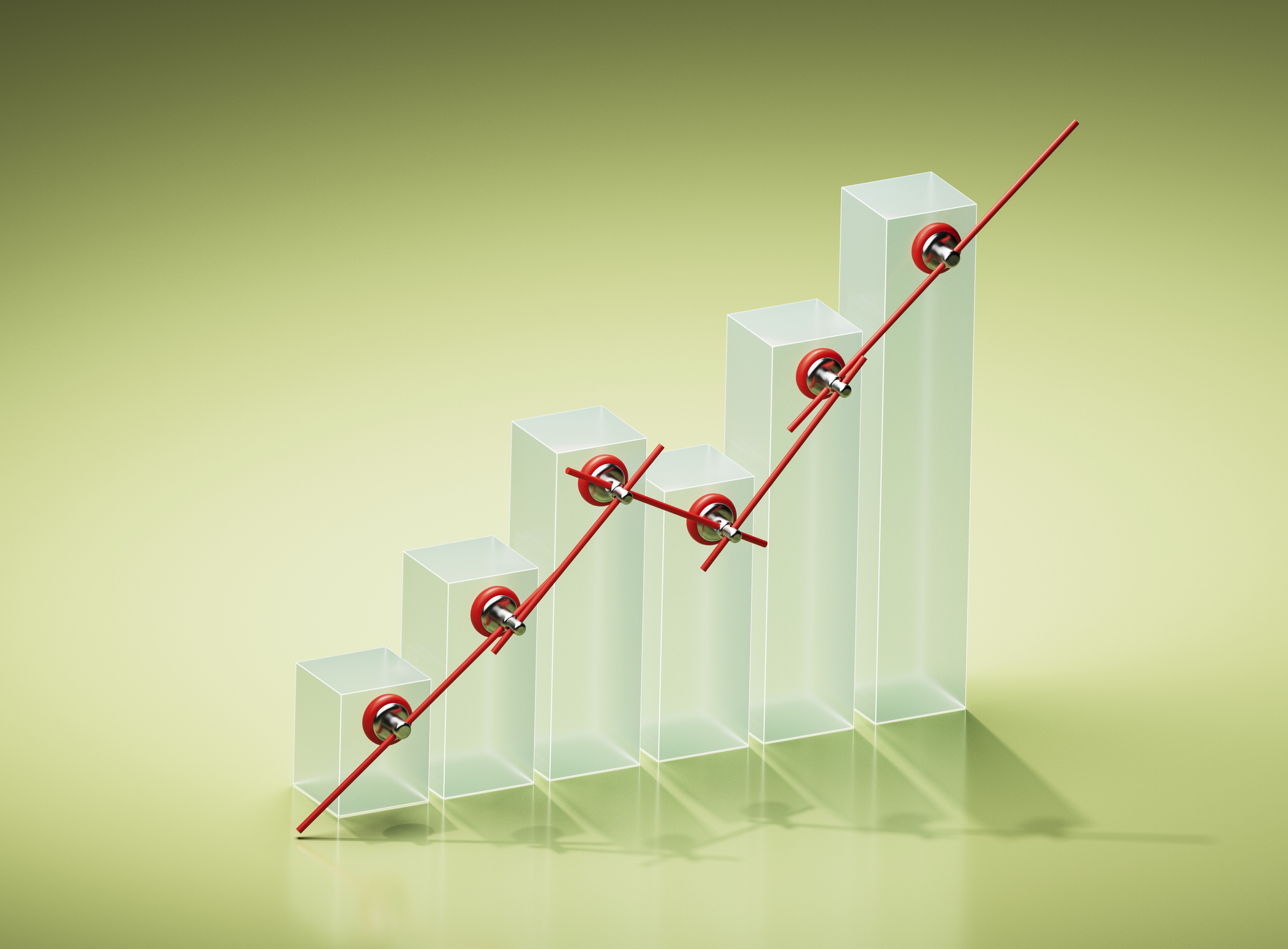Stock Basics: Keep an Eye on Earnings
This is the bottom line: profits. Plus, share prices and earnings can help you compare stocks.
Do you own stocks or stock funds? If the answer is yes, this tutorial can help you develop a portfolio that makes sense for you. If the answer is no, this planning center has the information and advice you need to confidently place your first buy order.
Here is what you need to know about earnings.
How much does the company earn?
This is the bottom line you hear so much about. It boils down the company's year (or quarter) into a nice, neat number. Earnings per share is the company's net income (after taxes and after funds are set aside for preferred-stock dividends) divided by the number of common-stock shares outstanding.
From just $107.88 $24.99 for Kiplinger Personal Finance
Become a smarter, better informed investor. Subscribe from just $107.88 $24.99, plus get up to 4 Special Issues

Sign up for Kiplinger’s Free Newsletters
Profit and prosper with the best of expert advice on investing, taxes, retirement, personal finance and more - straight to your e-mail.
Profit and prosper with the best of expert advice - straight to your e-mail.
Earnings reports may differentiate between income produced by regular operations and income from unusual transactions, such as the sale of a subsidiary.
When a company is described as growing at a certain rate, it's usually the earnings that are being used as the measure, and successful pros look for companies with a strong record of rising earnings.
How does the price relate to earnings?
Divide the current price of a stock by its earnings for the last 12-month period and you have the price-earnings ratio. The "P/E" is probably the most widely used analytical tool among stockpickers, and for good reason: It tells you what investors think of a particular stock compared with other stocks and compared with the stock market as a whole.
Actually, there are two ways to express a P/E ratio: The most common way is to use the previous year's earnings; the number is called a "trailing" P/E. Sometimes analysts use their earnings forecasts to calculate a potential P/E for a company, in which case it is called an "anticipated" P/E or something similar.
The fact that investors are willing to pay 40 times earnings for one stock and only 15 times earnings for another seems to indicate that the first stock is more highly regarded than the second, and you wouldn't go too far wrong thinking of it that way.
Perhaps investors feel more confident that the first company will be able to increase its earnings faster than the second company. Or perhaps they just expect the price of the first company's stock will rise faster than the second company's stock.
Still, a company's P/E ratio doesn't provide an investment clue until it's compared with P/E values of the same company over past years, the P/Es of other companies in the same business and the P/Es of stock indexes representing the market as a whole.
A stock selling for $10 a share with earnings of ten cents a share may seem cheap. But its P/E of 100 actually makes it vastly more expensive than a $50 stock with earnings of $2.50 a share (a P/E of 20).
A stock with an especially high P/E may be the victim of investors' unrealistic expectations. Even a slight stumble could send the price tumbling — as is the case for many dot-com or tech issues.
The idea is to buy your stock at the lowest possible P/E. As others begin to recognize the stock's potential, they may bid up the price (and thus the P/E).
That is your hope, of course, but reality doesn't always oblige. Sometimes a rise in earnings per share may actually be accompanied by a drop in price.
Why?
Because expectations were that earnings would climb higher than they actually did.
Remember: Investors buy a stock not for what it can do for them today, but for what they hope it will do for them tomorrow. If it doesn't live up to expectations, they will tend to bail out.
Profit and prosper with the best of Kiplinger's advice on investing, taxes, retirement, personal finance and much more. Delivered daily. Enter your email in the box and click Sign Me Up.
-
 The SEC Is Concerned for Older Investors and Retirement Savers. Here's What You Should Know
The SEC Is Concerned for Older Investors and Retirement Savers. Here's What You Should KnowThe SEC focusing on older investors, retirement and college savers, and private securities. Here's how those changes impact you.
-
 Vesting, Catch-Ups and Roths: The 401(k) Knowledge Quiz
Vesting, Catch-Ups and Roths: The 401(k) Knowledge QuizQuiz Test your understanding of key 401(k) concepts with our quick quiz.
-
 Why You Should Pay Attention to Company Guidance
Why You Should Pay Attention to Company GuidanceUnderstanding how corporate profit forecasts affect analysts’ estimates and stock ratings can help you make investment decisions.
-
 What to Expect from the Global Economy in 2026
What to Expect from the Global Economy in 2026The Kiplinger Letter Economic growth across the globe will be highly uneven, with some major economies accelerating while others hit the brakes.
-
 Shoppers Hit the Brakes on EV Purchases After Tax Credits Expire
Shoppers Hit the Brakes on EV Purchases After Tax Credits ExpireThe Letter Electric cars are here to stay, but they'll have to compete harder to get shoppers interested without the federal tax credit.
-
 The Economy on a Knife's Edge
The Economy on a Knife's EdgeThe Letter GDP is growing, but employers have all but stopped hiring as they watch how the trade war plays out.
-
 Banks Are Sounding the Alarm About Stablecoins
Banks Are Sounding the Alarm About StablecoinsThe Kiplinger Letter The banking industry says stablecoins could have a negative impact on lending.
-
 Japan Enters a New Era of Risk and Reform
Japan Enters a New Era of Risk and ReformThe Kiplinger Letter Japan has entered a pivotal moment in its economic history, undertaking ambitious policy and structural reforms to escape from decades of stagnation.
-
 After Years of Stagnant Growth, Hope Emerges for EU Economy
After Years of Stagnant Growth, Hope Emerges for EU EconomyThe Kiplinger Letter Can a German fiscal push outweigh French political peril?
-
 The Most Tax-Friendly States for Investing in 2025 (Hint: There Are Two)
The Most Tax-Friendly States for Investing in 2025 (Hint: There Are Two)State Taxes Living in one of these places could lower your 2025 investment taxes — especially if you invest in real estate.
-
 Trump's Economic Intervention
Trump's Economic InterventionThe Kiplinger Letter What to Make of Washington's Increasingly Hands-On Approach to Big Business